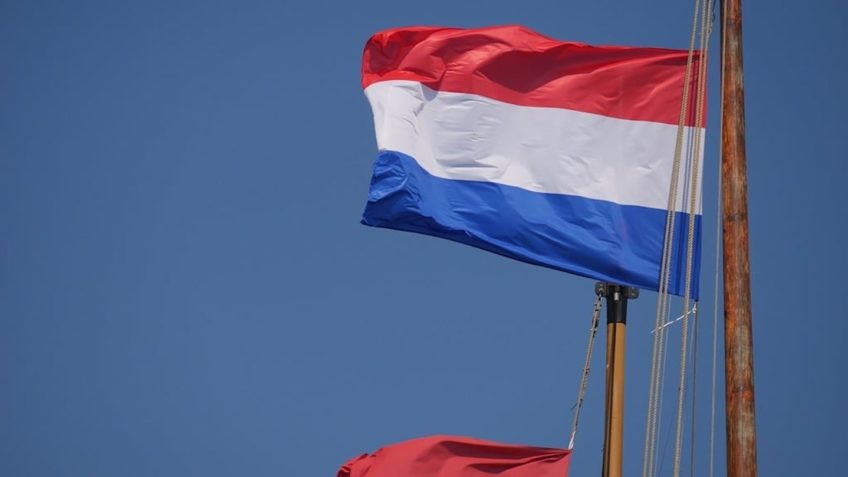
The European country has 26% of its territory below sea level and suffered a historic flood in 1953, which killed 1,836 people
The Netherlands has one of the most challenging geographies in Europe. The country has 26% of its territory below sea level, while 60% would be at high risk of frequent flooding if there were no type of human intervention. Faced with this scenario, the country has developed a complex infrastructure over the centuries to prevent invasion from the North Sea. It is also a source of inspiration for many cities and countries whose territories are subject to flooding, such as the flood that occurred in the Porto Alegre region, in Rio Grande do Sul, in May 2024.
The Netherlands’ main strategy to maintain the integrity of its territory was the construction of barriers and canals, which in turn require expenditure for their conservation. To the Poder360the Dutch Ministry of Infrastructure and Water Management reported that the country invests around 4 billion euros per year in maintaining its anti-flood system.
Approximately 70% of the Netherlands’ GDP (Gross Domestic Product) is produced in areas with high risks associated with flooding (700 billion euros) and more than half of the population (9 million people) lives in these locations. The data is from the national water plan for the period 2022 to 2027. The document was published in March 2022. Read in full (PDF – 37 MB, in Dutch).
Anti-flood infrastructure is part of Dutch history and culture. Its construction began to be developed even before the unification of the country. The first records of dikes being built to prevent the sea from entering agricultural land date back to before the 13th century. Today, the country has more than 18,000 km of dikes.
It was during the 13th and 16th centuries that the construction of barriers became more frequent in the regions that in 1564 would form the current composition of the Netherlands. This is because it was at this time that the Dutch coast reached its greatest extent and the need to build infrastructure to prevent invasion from the sea became more urgent.
In the year 800, the Netherlands had a coastline of approximately 2,300 km. Already in 1500, the Dutch coastline increased to 2,600 km. With the development of technology and the increase in population in the region, which became rich during the time of European colonization of the Americas and Asia, the Netherlands increased investments in barriers.
Through the intensification of barrier projects, the country was able to reduce its coastline from 2,100 km in the second half of the 19th century, to 1,600 km in 1950, until reaching the current length of 880 km of coastline. In absolute numbers, this means that the Netherlands increased its size by 17% due to the recovery of land taken by the sea.
Dutch dikes also play a cultural role in the country’s history. The two largest cities in the Netherlands – Amsterdam and Rotterdam – derive their names from dams. The suffix “dã” is a translation of the word “dam” in Dutch, and also in English, which means “dike”, “dam” or “dam”.
The origin of the capital Amsterdam is linked to a dam built on the river Amstel (today even the name of a famous beer), while the 2nd most populous city in the country, Rotterdam, has the origin of its name in a dam built on the river Rotte. Before the construction of this barrier, there was a city called Rotta, where Rotterdam is located today. The dike was built because the place is always flooded, with records of floods dating back to the 12th century.
The official name of the Netherlands is “The Netherlands” (which, in Dutch, means “low country”, in the sense of having a very low surface, at or below sea level). In reality, “Holland” is the name of two of the country’s provinces (North Holland and South Holland), but it is how the nation became known worldwide — despite its diplomats making a constant effort to popularize “Netherlands”.
THE DISASTER OF 1953
Despite the country’s wealth and experience in setting up anti-flood infrastructure, the Netherlands has already suffered several natural disasters. The most traumatic episode in the country’s recent history was the “North Sea Flood of 1953”.
On the night of January 31st to February 1st, 1953, a strong storm caused great devastation in the province of Zealand, in the southern region of the Netherlands. Several dikes broke due to the force and volume of water and wind. Large parts were flooded in the country’s southernmost province, Zealand, which borders Belgium.
The 1953 flood also hit parts of England and Belgium, but the Netherlands was the most devastated country. In total, 2,551 people died, 1,836 in the Netherlands. In addition to the loss of human life, the flood caused major economic impacts with flooded land, homeless people and dead animals.
The year after the flood, in 1954, the country began an ambitious project to create infrastructure to protect the North Sea in Zealand. The so-called Delta Project took a total of 43 years to complete, being completed only in 1997. The project consists of 13 barriers to control the entry of water and protect the region from flooding. The total cost of the project, in values adjusted for inflation, was 5 billion euros.
HOW THE NETHERLANDS PREPARES FOR CLIMATE CHANGE
The barriers in the Netherlands work differently than when building a dam. While a dam only prevents water from passing from one side to the other, Dutch structures, for the most part, work linked to a system of pumps that work to throw the water out.
Furthermore, the operation of the Delta Project’s dikes are connected and controlled by a central computer that calculates sea level in real time. If the water rises, floodgates are closed to control the volume of water that passes through the barrier.
This means that the maintenance of this entire structure is not limited to keeping the barriers solid and identifying cracks, but also the constant maintenance and modernization of these technological mechanisms.
The Dutch government is closely monitoring projections of rising North Sea levels, especially in recent decades, when concerns have grown in the face of discoveries about the effects of climate change.
According to reports from KNMI (acronym for Royal Dutch Meteorological Institute), sea levels on the Dutch coast have been rising by approximately 3 millimeters per year over the last two decades. This is 1.5 times faster than the average recorded over the last century.
To contain this advance, the Dutch government approved a program in 2019 that should invest 18 billion euros in improving its dikes by 2033 – not counting what is already spent annually (around 4 billion euros) to maintain the system already. existing.
Source: https://www.poder360.com.br/infraestrutura/holanda-investe-4-bilhoes-de-euros-por-ano-em-infraestrutura-antienchente/

